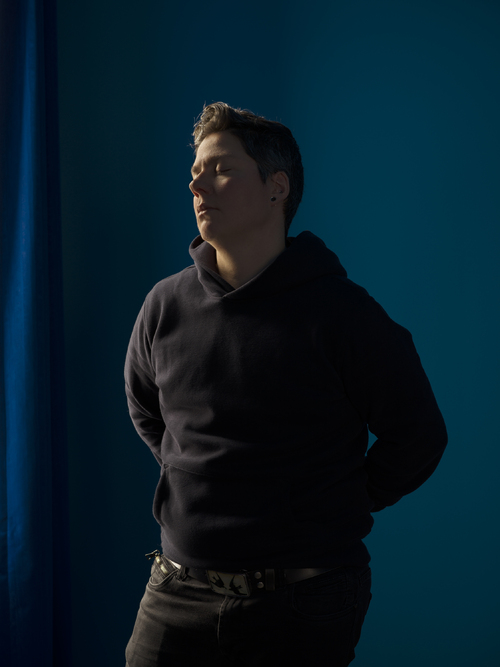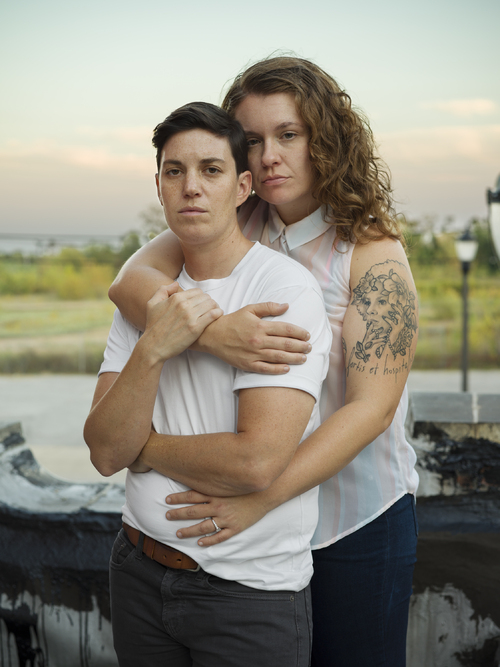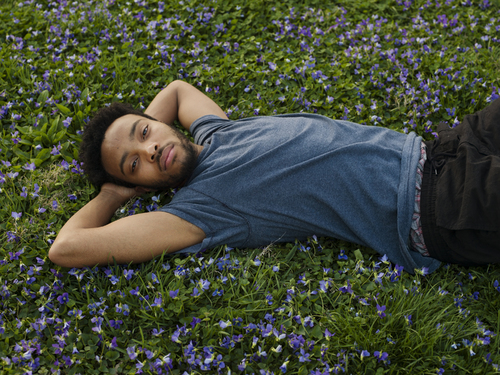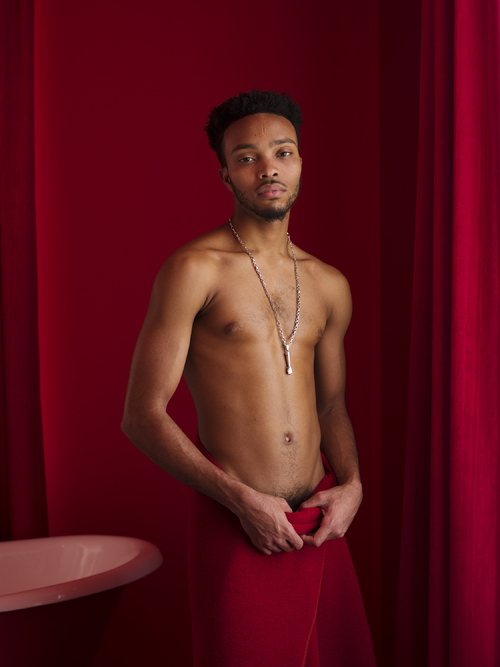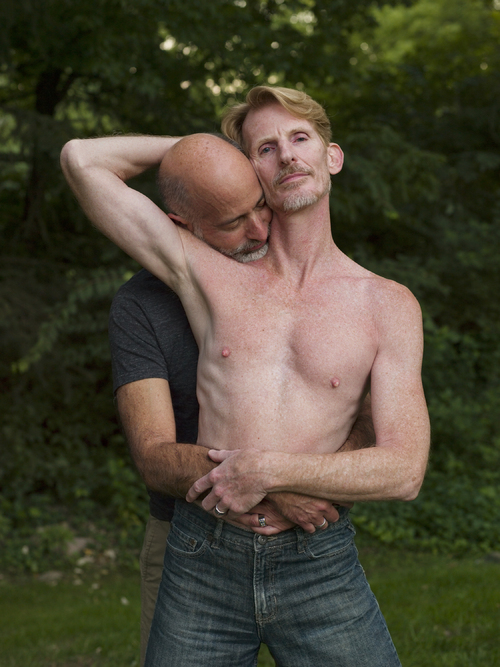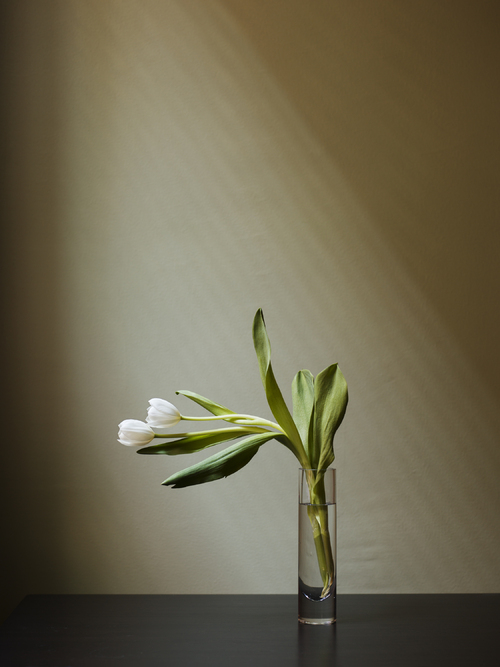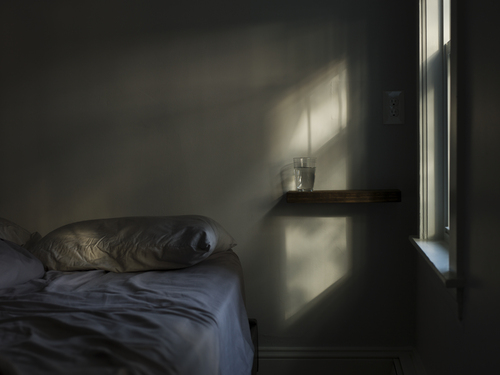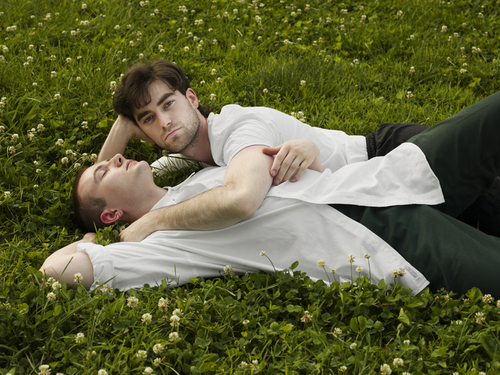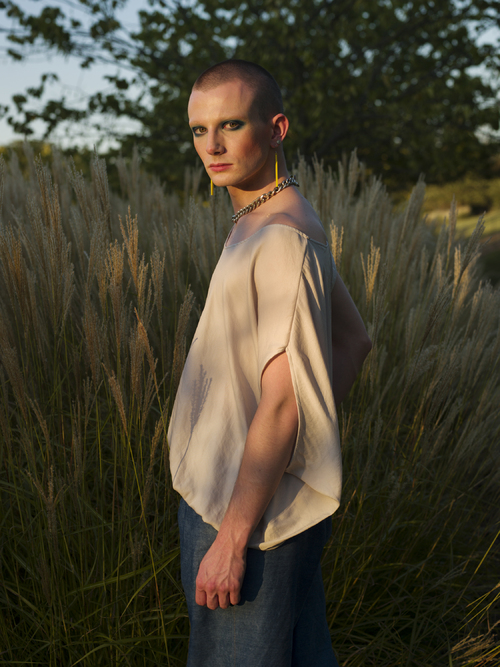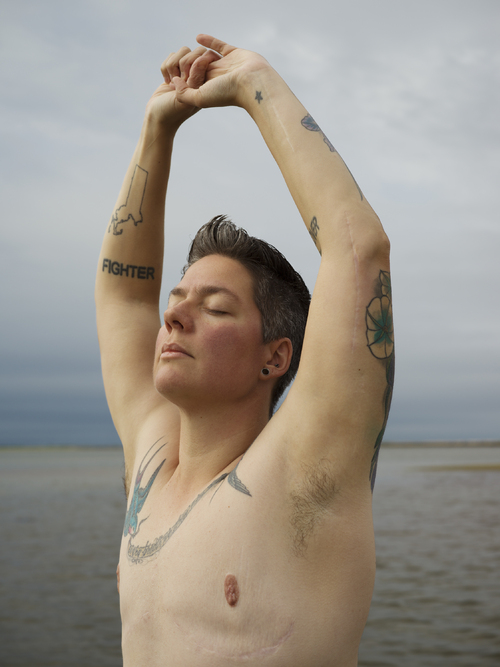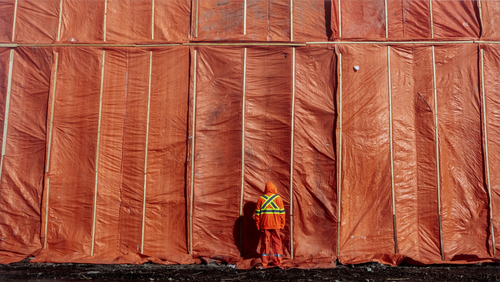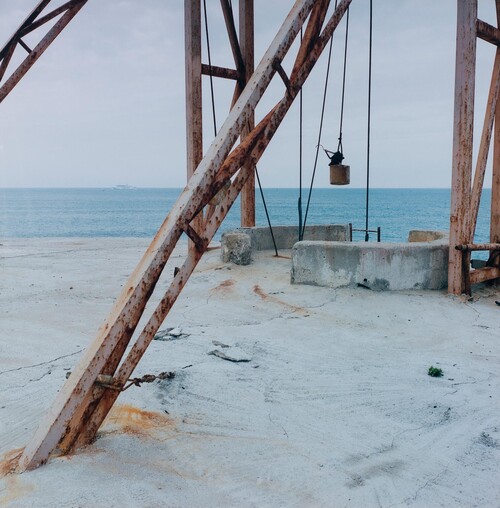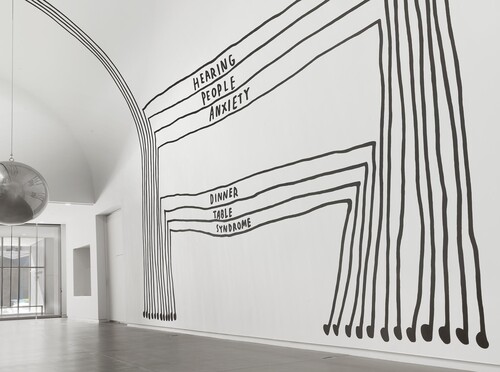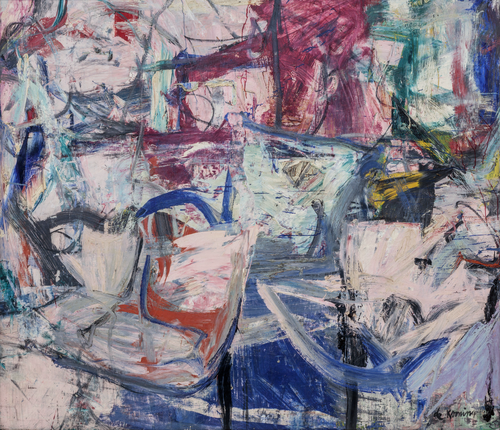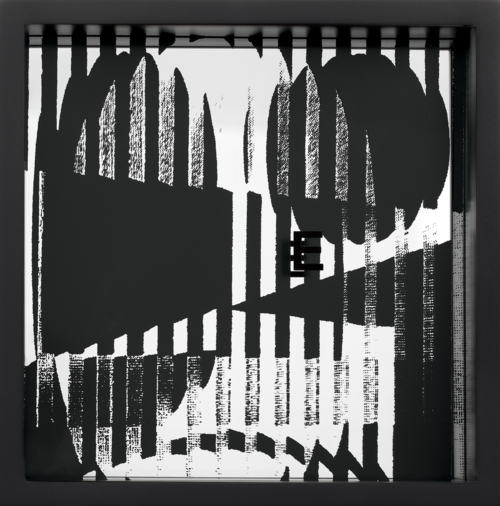The Power of Queer Portraiture
Download the educator resource:
Introduction
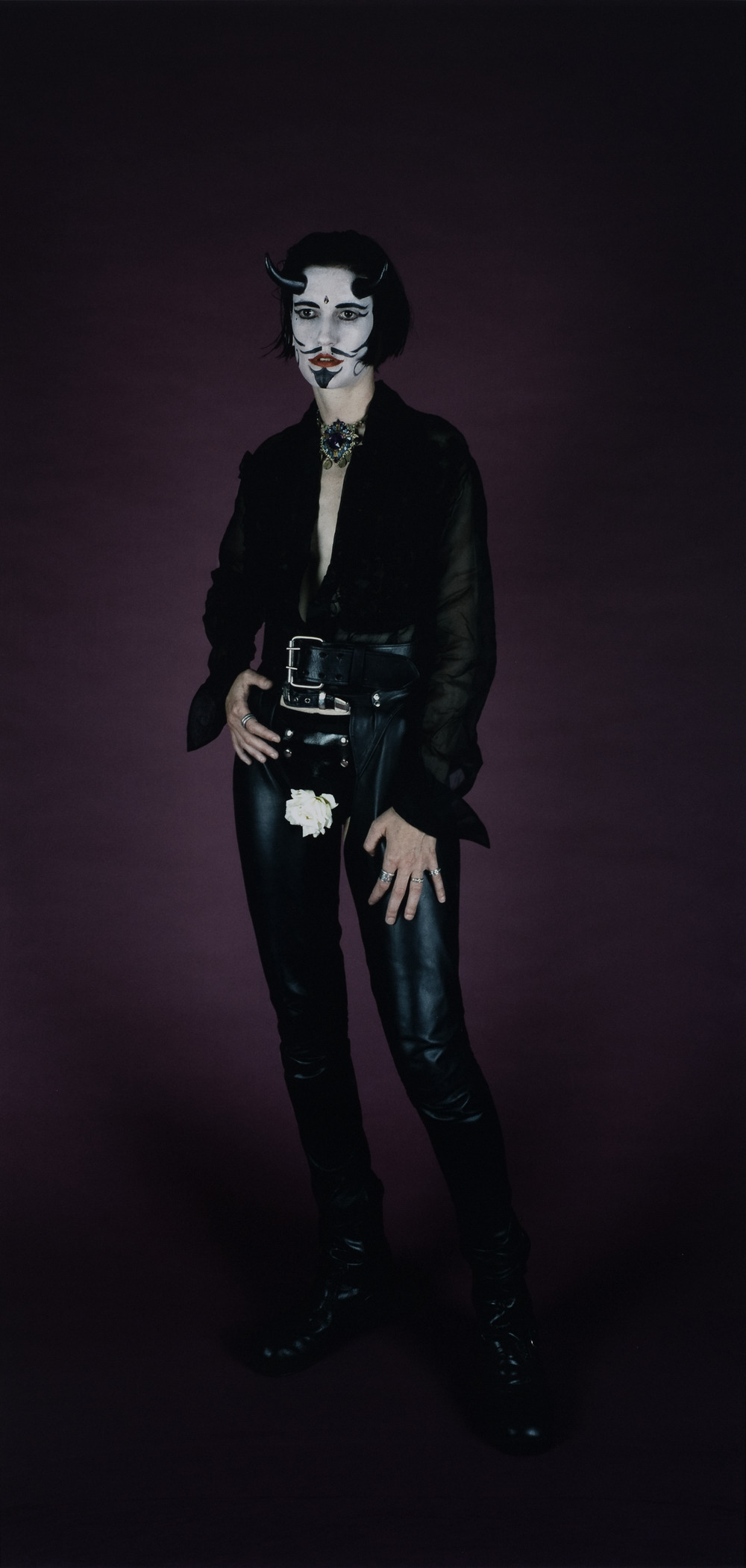
The American photographer Catherine Opie captures contemporary life through familiar genres including portraiture, landscape, and studio photography. She is known for her work representing queer communities and subcultures. For her Portrait series (1993–96) Opie photographed members of the LGBTQ+ community drawn from her close circle of friends and fellow artists.
A Closer Look
Take a minute to look closely at the artwork. Let your eyes wander and be drawn to details that stand out to you.

What do you SEE?
List your observations about this artwork, including what you notice about the setting of the portrait, the sitter's body language and facial expression, and the artist's use of color and lighting.
What does it make you THINK about?
Write down some of the ideas, emotions, and associations that this artwork evokes.
What does it make you WONDER?
Write down any questions that this artwork brings to mind.
The subject of this portrait, Trash, now known as Tre, was a performer and the artist’s roommate at the time. Opie photographed Trash in their shared living room in Los Angeles in 1994. Set against a vibrant purple background that recalls Hans Holbein the Younger’s portraits of sixteenth-century aristocrats, the full-length, leather-clad figure’s identity is simultaneously asserted and obscured through the white mask-like makeup, prosthetic horns, and fluidity of masculine and feminine signifiers that resist categorization and binary notions of gender expression. A white rose draws attention to a codpiece worn under chaps, and heavily lined eyes and bright-red lipstick paired with a painted mustache and goatee emphasize the performative and expansive experience of gender. Removed from the surrounding world, the figure’s individuality and self-expression are foregrounded. Drawing on the art historical tradition of portrait photography, Opie elevates identities that have been labeled by society as “other,” presenting LGBTQ+ culture with dignity and compassion.
“Artists who challenge the idea that only a certain type of person or body can be valued are showing that what’s considered ‘the other’ can be beautiful too.… It’s also important to make photographs that inspire one to really look, to be drawn in, instead of just glancing at something quickly. For me, beauty is also about being held.” — Catherine Opie
Read the artist statement above. How does Opie’s portrait Trash challenge the idea that only a certain type of person or body can be valued?
In what ways does Trash challenge gender stereotypes?
How can portraits inspire a viewer to really look?
The 1990s were a pivotal time for LGBTQ+ rights and activism. The devastating impact of the AIDS epidemic due to government inaction during the Reagan administration in the 1980s continued into the following decade. Discriminatory medical practices perpetuated misinformation about queer people and prevented access to public health resources, while legal policies like “Don’t Ask, Don’t Tell” from the Clinton administration further stigmatized LGBTQ+ identities. In the art world the obscenity trial of Robert Mapplethorpe, a gay photographer known for his controversial and sexually explicit images, led to the cancelation of the artist’s exhibition at the Corcoran Gallery of Art and efforts to defund the National Endowment for the Arts. In the face of so much neglect and harm, queer people claimed their dignity and fought for their rights through political organizing, protest, public education campaigns, and community care. Opie, a member of AIDS Coalition to Unleash Power (ACT UP), an activist organization established in 1987 in New York, describes her work at the time as responding to the sense of loss and erasure experienced within queer community and a desire for “making images as a record.” Within this sociopolitical context Opie’s work challenges traditional norms of gender and sexuality and how these identities are represented, using the power of portraiture to create a sense of visibility and belonging.
Create
Feeling inspired? Imagine that you are having your portrait made. Write or draw in response to the following questions:
What is the setting of your portrait?
What are you wearing and posing with?
How are you posed?
Who is the artist?
Reflect
Take some time to think, write, or discuss in response to the following questions:
What messages have you received about gender and sexuality? Where do these messages come from?
How do stereotypes of gender and sexuality show up in the communities you are part of?
What can you do to help people feel included and valued at school and in your community?
Further Explorations
Learn more about how the American photographer Catherine Opie investigates identity and community through photography: https://art21.org/artist/catherine-opie/
Read this interview with Catherine Opie in which she discusses AIDS activism and social change: https://issuemagazine.com/catherine-opie/#/
Explore the nuances of gender identity, gender expression, and sexual orientation with the Gender Unicorn: https://transstudent.org/gender/
Read about the "Don't Ask, Don't Tell" policy: https://time.com/5339634/dont-ask-dont-tell-25-year-anniversary/
Learn more about the Robert Mapplethorpe obscenity trial: https://www.smithsonianmag.com/history/when-art-fought-law-and-art-won-180956810/
Dive into history through the words of LGBTQ+ activist Vito Russo in his 1988 speech “Why We Fight”: https://actupny.org/documents/whfight.html
Feedback
We are committed to encounters with art that inspire creative engagement, social and intellectual inquiry, and meaningful connections across disciplines, cultures, and histories. Do you have ideas or suggestions for other learning resources? Is there an artist or topic that you would like to learn more about? We would love to hear your feedback. Please direct comments or questions to Meredith Lehman, head of museum education, at lehman.meredith@wustl.edu.
